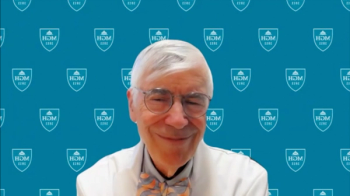
Rising Suicide Rates Among AAPI Youth Indicate Need for Investing in Mental Support
Suicide has emerged as the leading cause of death among Asian American and Pacific Islander (AAPI) youths, a demographic that is rapidly growing in the United States.
Immediate and meaningful action through targeted research, culturally competent care, and community-based prevention strategies is necessary to support the mental health and well-being of Asian American and Pacific Islander (AAPI) youths, according to new commentary published in
Despite the urgency of addressing mental health in these communities, research and funding in this area have been historically inadequate. The authors referenced recent data by Keum et al., which shed light on this critical issue, revealing the alarming trends in suicide rates among AAPI youths aged 10 to 19 years.2
Alarming Increase in Suicide Rates
The investigation results were stark: from 1999 to 2021, suicide rates among AAPI youths have surged, according to national mortality data from the National Center for Health Statistics. In 2021, the suicide rates were 6.49 per 100,000 for males and 3.72 per 100,000 for females. The increase over the 22-year period was significant, with male youth suicide rates rising by 72% and female rates by 125%. The cross-sectional analysis demonstrated the upward trend began in 2009 for males and 2004 for females, peaking in 2019 and 2020, respectively.
Contributing Factors: Racism, Xenophobia, and the Model Minority Stereotype
The rise in suicide rates parallels an increase in anti-Asian hate and xenophobia, including hate incidents, verbal abuse, and cyberbullying, the authors noted.1 These forms of structural, institutional, and interpersonal racism are particularly harmful to youths. The pervasive "model minority" stereotype further exacerbates the issue by masking the real struggles faced by AAPI youths.
“The lethality of risks [is] further exacerbated by the prevailing model minority stereotype, in which Asian American and Pacific Islander youths are all generalized to be academically exceptional, socially mobile, diligent, and well-adjusted,” the authors wrote. “This stereotype was born out of political motivation to deny the current conditions and persistent legacy of racism, conveying that through hard work all people can succeed in a country that functions as a meritocracy.”
The pervasive model minority stereotype masks the legitimate struggles faced by this young population, serving as a barrier to recognition of its mental health needs by discouraging these individuals from seeking help.
Gender Differences and Intersectional Discrimination
The commentary also acknowledged the gender disparities in suicide rates exhibited in the findings. While male youths have higher suicide rates, females have experienced a larger increase throughout the study period. The authors suggest that cultural and gendered family roles, as well as intersectional discrimination from both sexism and racism, may contribute to these trends. The study's limitations include an inability to disaggregate data for LGBTQ+ youths, who generally have higher rates of suicidal ideation and self-harm.
The Role of Firearms and the Need for Culturally Tailored Interventions
Another critical factor mentioned was the increased access to firearms in AAPI households, a trend that has escalated with the rise in anti-Asian hate during the COVID-19 pandemic. While suffocation remains the most common method of suicide among AAPI youths, the use of firearms has sharply increased. Addressing this issue requires targeted efforts to improve firearm safety and reduce access to lethal means.
Call for Disaggregated Data and Increased Funding
A significant limitation of the study was the inability to break down data into specific ethnic subgroups within the AAPI population. This lack of granularity undermines efforts to understand and address specific disparities. Future research must disaggregate these groups to develop more effective, culturally tailored interventions.
Based on the findings, investigators called for “an examination of culturally informed etiology and trajectory of suicide risks with an eye toward gendered and racialized factors (eg, gendered racism and gender norms).”2
The commentary authors emphasized the urgent need for increased funding and research dedicated to AAPI mental health.1 The model minority stereotype has likely shielded these disparities and contributed to the underfunding and underrepresentation of AAPI individuals in mental health research.
“To curb the worsening youth suicide rates seen in Asian American and Pacific Islander communities, we need meaningful investments in research along the translational spectrum, intentional workforce development of clinicians prepared to serve the Asian American and Pacific Islander community across youth sectors of care, improved surveillance, and culturally tailored, evidence-based, community-based interventions to support Asian American and Pacific Islander youth mental health,” the authors concluded.
References
1. Bui AL, Lau AS. Suicide rates among Asian American and Pacific Islander touths—A cause for alarm. JAMA Netw Open. 2024;7(7):e2422694. doi:10.1001/jamanetworkopen.2024.22694
2. Keum BT, Oh S, Sheftall AH. National trends in suicide among Asian American or Pacific Islander Youth. JAMA Netw Open. 2024;7(7):e2422744. doi:10.1001/jamanetworkopen.2024.22744
Newsletter
Stay ahead of policy, cost, and value—subscribe to AJMC for expert insights at the intersection of clinical care and health economics.





























































